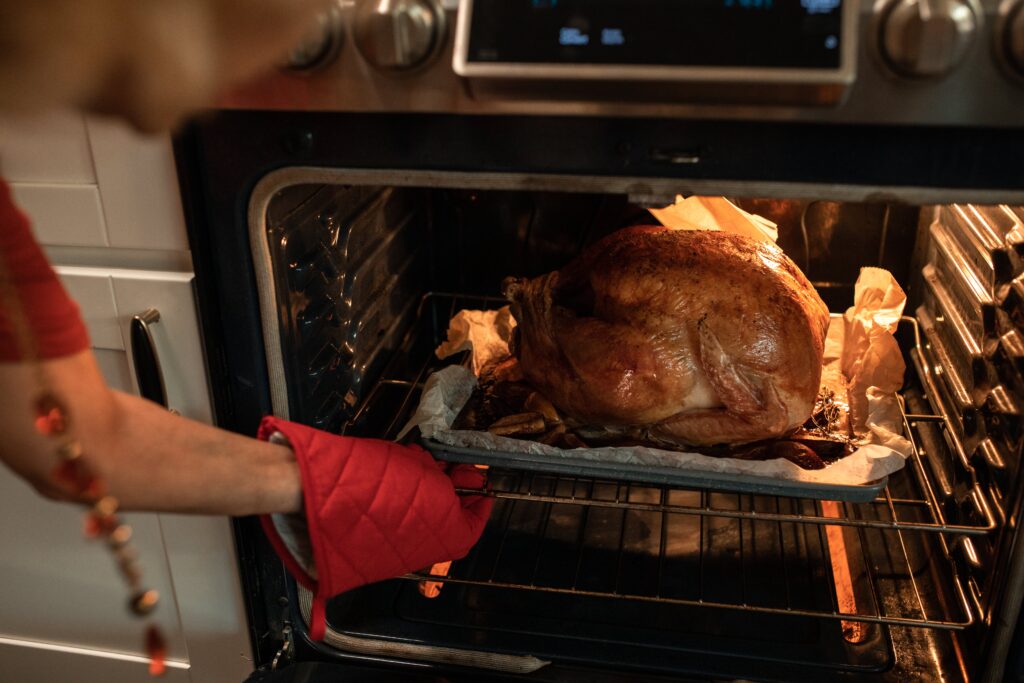
As the Thanksgiving festivities come to an end, many households find themselves in a post-feast lull. While memories of delicious meals and quality time with loved ones linger, it’s also an opportune time to turn our attention to the quality of the air we breathe within our homes. As winter approaches and windows stay shut, the indoor air quality becomes increasingly crucial. Here are some practical steps to enhance and maintain a healthy atmosphere in your home during the week after Thanksgiving.
- Ventilate Your Space:
After hosting a Thanksgiving gathering, your home might still be filled with the aromas of various dishes. Open windows and doors to allow fresh air to circulate and replace lingering odors. Proper ventilation helps expel pollutants and ensures a continuous supply of clean air. If you had a fire, burned food, or just some unpleasant lingering cooking odors; ventilation may not do it! - Clean Your HVAC System:
Your heating, ventilation, and air conditioning (HVAC) system play a pivotal role in maintaining indoor air quality. Change air filters regularly to prevent the buildup of dust, pet dander, and other airborne particles. Consider scheduling a professional HVAC cleaning to ensure optimal performance and air purification. - Use Air Purifiers:
Consider investing in air purifiers equipped with HEPA filters. These devices can capture particles as small as 0.3 microns, effectively reducing allergens and pollutants in the air. Place air purifiers strategically in commonly used areas, such as the living room or bedrooms. - Greenery for Clean Air:
Introduce houseplants known for their air-purifying properties. Plants like spider plants, snake plants, and peace lilies can help filter out common indoor pollutants and improve overall air quality. Just be mindful of any potential allergies to specific plants. - Limit Smoke Exposure:
If your Thanksgiving celebration involved a fireplace or candles, make sure to minimize smoke exposure. Clean out the fireplace and properly ventilate the area. The only healthy number of candles is zero, but if you must use them: opt for clean-burning candles made from soy or beeswax instead of those containing paraffin, which can release harmful chemicals when burned. - Reduce Volatile Organic Compounds (VOCs):
VOCs are emitted by various household products, including paints, cleaning supplies, and certain furnishings. Opt for low-VOC or VOC-free alternatives when possible. Allow newly purchased items, like furniture or rugs, to off-gas in a well-ventilated area before bringing them into your living spaces. Basically, try not to bring in unhealthy items. - Maintain a Clean Environment:
Regular cleaning goes a long way in improving indoor air quality. Vacuum carpets and rugs, dust surfaces, and mop floors to reduce the accumulation of allergens and particles. Pay extra attention to commonly overlooked areas like ceiling fans and vents. - Control Humidity Levels:
Maintaining optimal humidity levels (ideally between 30-50%) can prevent mold growth and dust mites. Use dehumidifiers in damp areas like basements and bathrooms, and ensure proper ventilation in these spaces. - Encourage No-Smoking Zones:
If smoking is a part of your holiday traditions, designate specific areas outside the home for smoking. This simple measure can significantly improve indoor air quality and reduce exposure to secondhand smoke. - Stay Mindful of Seasonal Allergens:
As winter arrives, be mindful of seasonal allergens like mold and dust. Keep entryways clean, use doormats, and encourage guests to remove their shoes before entering to minimize the tracking of outdoor pollutants.
In the week following Thanksgiving, taking these steps can contribute to a healthier indoor environment for you and your loved ones. By fostering good air quality habits, you not only enhance your immediate living space but also invest in the long-term well-being of your home. Breathe Clean offers a number of the services mentioned above (duct cleaning, odor removal, air quality improvement, and even whole-house energy audit style inspections). If you live in the Mid-Atlantic region and you want to know what you need, reach out and we can get started with a basic inspection.

